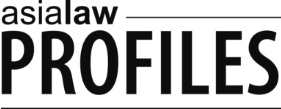In its Hong Kong 2023-24 Budget, the Financial Secretary announced an extension of its insurance-linked securities (“ILS”) grant scheme for a further 2 years. The scheme subsidises the cost of structuring ILS. ILS, also known as catastrophe bonds, enable insurers to fund specific insured events and provide returns to investors to the extent those events do not materialise. Hong Kong introduced legislation in 2021 creating a new category of special purpose insurers who can issue ILS.
For insurers, ILS provide a means of risk mitigation and method of raising capital independent of an insurer’s own capital base. For investors, ILS provide relatively high yields uncorrelated to the returns of traditional assets and thus offer a means of generating alpha and providing portfolio diversification. Research from Shroders suggests that ILS funds generated annualised returns of 8.3% from 2002 to 2013.
If you'd like more information about ILS, please contact one of our insurance lawyers.
ILS Market
Though the ILS market remains fairly new, in 2022, insurers issued US$10.5 billion worth of ILS, down from a record of US14 billion in 2021. ILS growth has been driven in part by the need for insurers to diversify risk after major catastrophes. The first ILS issuance came shortly after Hurricane Andrew inflicted US$27 billion in damage, leading to the failure to 8 insurance companies and pushing others to the brink of insolvency. The disaster led to the first ILS issuances in 1997. After Hurricane Katrina depleted reinsurance capital and caused reinsurance prices to jump, global issuance of ILS spiked, with record issuances of US$4.7 billion in 2006 and US$7.1 billion in 2007. A persistent low interest rate environment pre-2022 has contributed as well to the growth of ILS as ILS typically offer relatively high yields.
ILS Features
ILS are commonly structured using one of three different types of payout triggers, namely indemnity, industry loss and parametric. A survey by the Chicago Federal Reserve in the US shows that from 1997-2017, just under 49% of ILS issuances featured indemnity triggers, 33% featured industry loss triggers, 14% featured parametric triggers and 4% featured multiple triggers. Insurance companies generally favoured indemnity triggers whereas reinsurance companies generally favoured industry loss triggers.
Indemnity triggers help insurers manage risks on a specific set of policies they underwrite. An indemnity trigger pays out when the insurer’s actual losses reach an attachment point. However, as actual losses must be verified before a payout, on average, payouts take two to three years following a triggering loss.
Industry loss and parametric triggers help reinsurers manage risks across a broad cross section of the insurance industry, enabling payouts based on aggregate losses to the industry based on a independent third party modellers estimate or on the measured strength of a covered catastrophe (e.g. earthquake magnitude or hurricane wind speed or barometric pressure). Industry loss and parametric triggers often result in payouts within three months following a triggering loss.
Grant Scheme Eligibility
Under the grant scheme, ILS with a maturity of 3 or more years are eligible for a subsidy to cover 100% of the upfront costs up to approximately US$1.5 million (HK$12 million) and ILS with a shorter maturity are eligible for a subsidy to cover 50% of the upfront costs subject to a cap of approximately US$0.75 million (HK$6 million). An eligible ILS issuance must take place in Hong Kong (though the issuer can be offshore) and the issuance must be at least US$32 million (HK$250 million).
Hong Kong ILS History
Since the launch of a new legislative framework to facilitate the issuance of ILS in 2021, Hong Kong has seen 3 such issuances to date, namely a US$30 million catastrophe bond issued by China Reinsurance Group (China Re) and China Property & Casualty Reinsurance, a US$150 million catastrophe bond issued by Peak Reinsurance Company and a US$32.5 million sponsored by PICC Property and Casualty Company.












